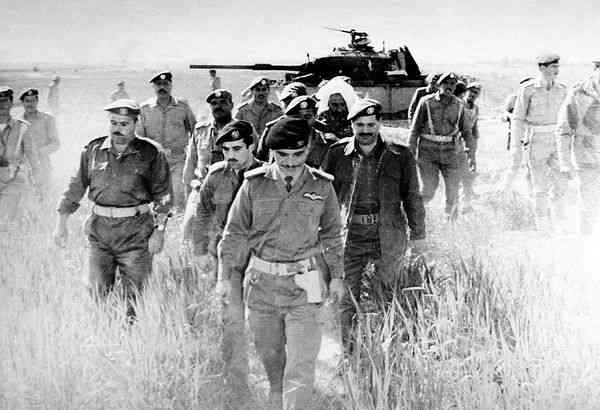The conflict that broke out in Jordan between the Jordanian armed forces led by King Hussein and the Palestine Liberation Organization led by Yasser Arafat between September 16 and 27, 1970 mainly, and some other events took place until 1971.
hat preceded events
The roots of the conflict go back to after the Battle of Dignity, in which the Jordanian army defeated the Israeli army, but what happened? At that time, there were more than 500 clashes between the Jordanian security forces and the Palestine Liberation Organization, resulting in many killings.
King Hussein bin Talal procedures
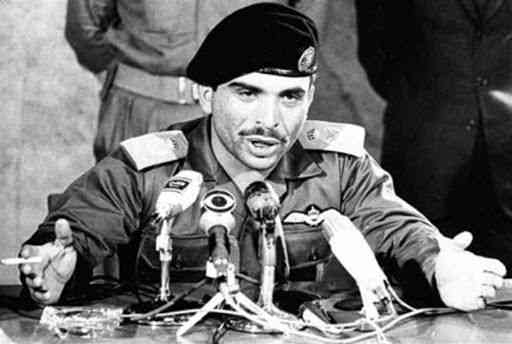
King Hussein visited Egyptian President Gamal Abdel Nasser, then the Jordanian Cabinet issued decisions clarifying the meaning that the Jordanian state aspires to a unified and organized society, and he also appointed Palestinian figures close to leaders in the liberation system in ministerial positions as an attempt to reduce the hatred formed among members of the PLO Because of the attacks carried out by the Jordanian army against PLO sites.
But all of that was not enough to relieve the tension.
But why did King Hussein not succeed in easing the organization’s anger?
Members of the organization accused some Jordanian parties of wearing clothes similar to the clothes of the Palestinian revolutionaries who call themselves the Fedayeen (meaning those who protect Palestine by themselves and their bodies), in order to disrupt the Palestinians and Jordanians.

In February of the same year, armed clashes took place in central Amman, resulting in 300 deaths, most of them civilians. Al-Hussein tried to ease the matter, saying: “We are all fedayeen.” He dismissed the Minister of Interior at the time, but nothing improved.
The organization declares hostility
Egypt and Jordan agreed to the Rogers Agreement that put forward the idea of a ceasefire in the war of attrition between Egypt and Israel and the Israeli withdrawal from areas occupied in 1969, but Syria, Iraq, the PLO and the Radical organizations rejected the proposed plan, and George Habash, the leader of the Popular Front for the Liberation of Palestine, declared his clear hostility to Jordan. : "The liberation of Palestine begins with Amman and the rest of the reactionary capitals."
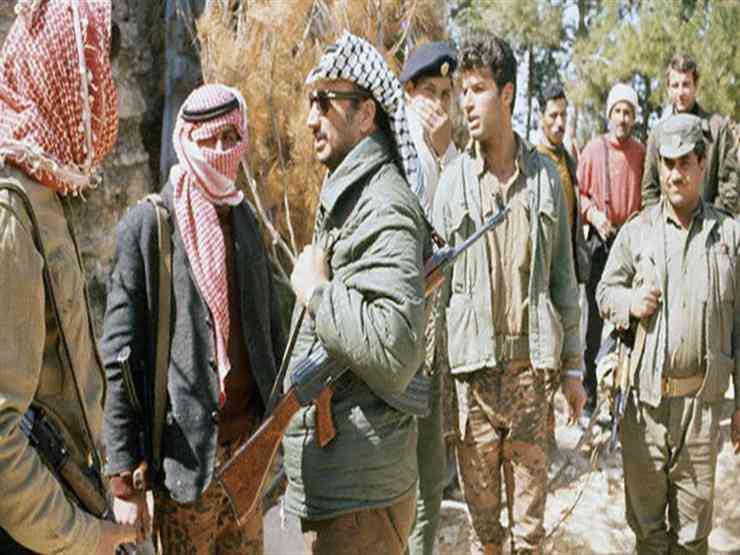
Yasser Arafat was silent, and he did not respond to these and other statements that made all Palestinian organizations confront the Jordanian army, which led some to believe that Arafat wanted to control government in Jordan.
The attempt to assassinate King Hussein
On June 9, the king was subjected to an assassination attempt in the Sweileh area in the capital, Amman, which failed, and another attempt in central Amman, where a sniper hiding in the minaret of the Husseini Mosque tried to kill him while he was in his car, but it also failed.
As a result, new clashes broke out, killing a thousand people.[1]
Seven points Agreement
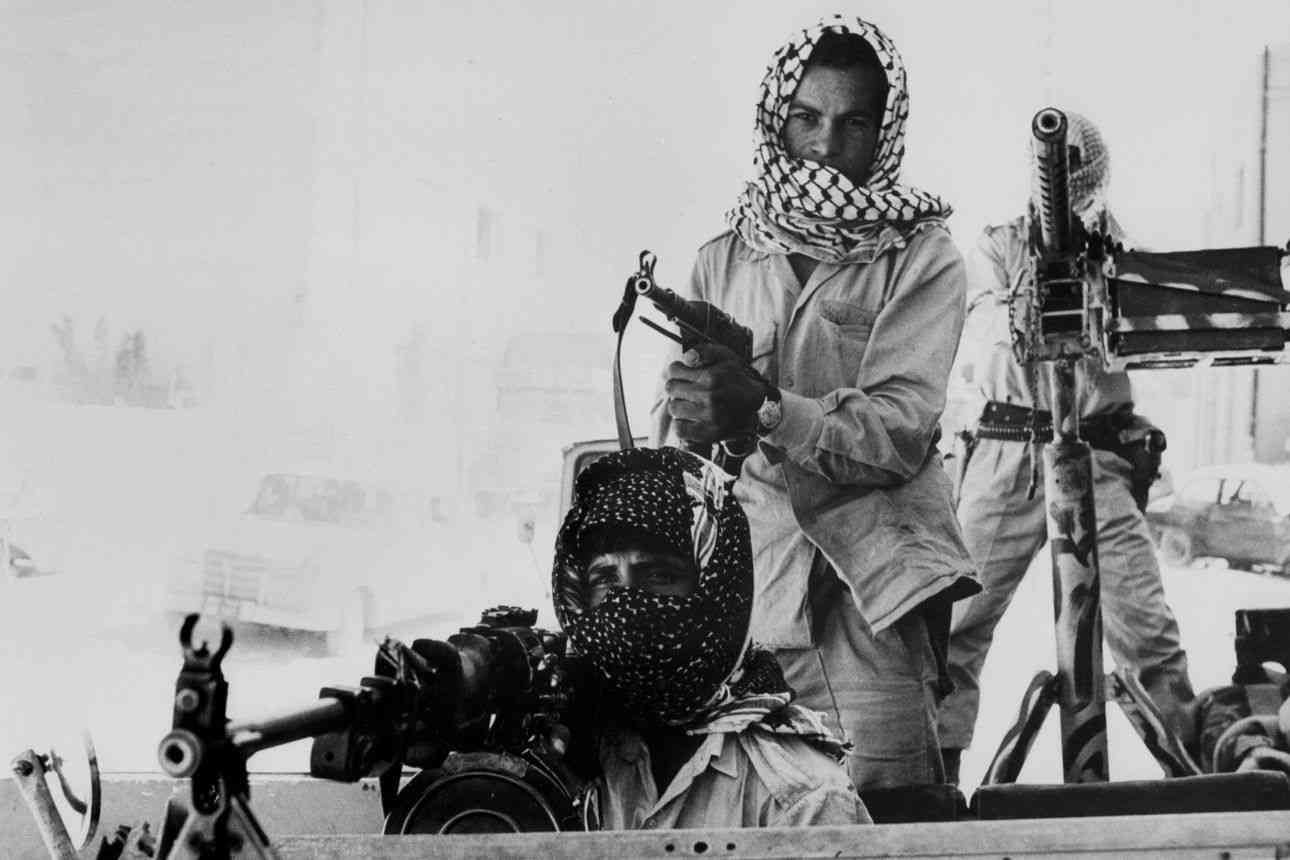
The Jordanian forces began to lose their control over some areas, which happened as a result of the members of the Tahrir Organization openly carrying weapons and setting up checkpoints in the streets. They also bypassed all that and started collecting taxes and established a state within the country, which ultimately reached seven items that occurred during the November negotiations 1968 between King Hussein and the PLO, as it stipulated:
- Members of organizations are prohibited from carrying weapons and walking around the street in their military clothing.
- Civil cars are prohibited from being stopped and searched.
- It is forbidden to recruit young Jordanians qualified for military service in the Jordanian army.
- The obligation to carry identification papers issued by the Jordanian state.
- Use only licensed cars that carry Jordanian plates.
- The Jordanian authorities are the ones that investigate the Palestinian cases that occurred in Jordan.
- The Jordanian-Palestinian conflicts are resolved through a council appointed by King Hussein and the PLO.
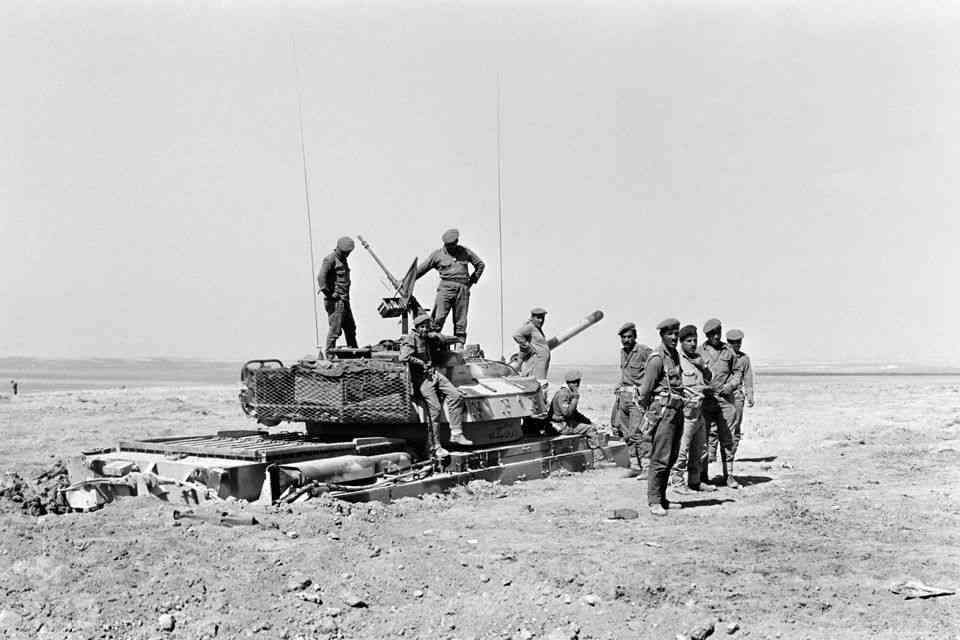
However, the PLO did not abide by the agreement and violated it, and the Jordanian army was attacked several times, and it became the subject of much ridicule. There were more than 500 clashes, and Zaid Rifai claimed that the PLO members beheaded a Jordanian soldier and played football with his head.
The organization increased the heat of the situation, as it struck Israel from the Jordanian borders without coordination with the Jordanian army, to which Israel responded with fierce bombing of Jordanian cities.
The organizations were not satisfied with this only, so the Popular Front occupied the Blue and took control of a horse stable belonging to Sharif Nasser bin Jamil, the uncle of King Hussein, then demanded the resignation of Nasser bin Jamil from the army command, which actually happened when he was dismissed from his post and Mashhour Hijazi was appointed in his place as commander For the army, this event was the straw that cut the camel's back, and the actual planning for the September events began.
Aircraft hijacking

At the beginning of September 1970, the Popular Front for the Liberation of Palestine hijacked 3 planes taking off from Germany, Switzerland and Amsterdam and heading towards New York, then diverted two of them to a landing strip in the Azraq area in Jordan, and the third was sent to Cairo, and members of the Popular Front demanded that the release Their comrades are imprisoned in European prisons, but their request was not accepted. After 6 days, the front blew up the three planes and released the hostages.
Then the organizations demanded the establishment of a Palestinian Authority on Jordanian lands two days after the incident, and that was a spark for the armed clash.
Armed clash[2]
The Jordanian leadership decided to take strong strikes to eradicate the organizations that have become a real threat to the stability of the Jordanian state, and King Hussein was inclined to a wise decision stipulating striking the organizations with strikes that limit their movement only. As for Field Marshal Habes Al-Majali and Director of Intelligence Nazir Rashid, they saw that they carry out a fatal blow that ends The presence of organizations in Jordan depends on the military superiority of the Jordanian army.
A military government was formed under the leadership of Mahmoud Daoud, then Mashhour Haditha Hijazi was removed from his position as army commander, and they appointed Habes al-Majali as his successor, as he was entrusted with the tasks of liberating the hostages and eliminating the organizations that had become a burden on the state.
Indeed, a lot of armored vehicles and armor were gathered and prepared for a military confrontation, despite the pressures exerted by some Arab governments on Jordan ...
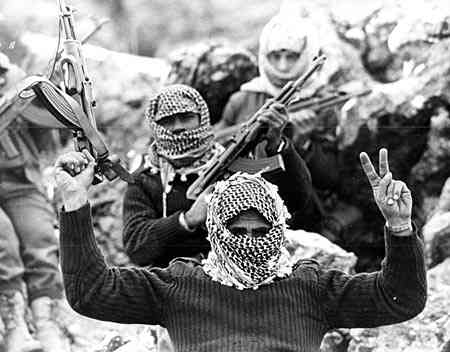
This plan was called the Jawhar Plan so that the attack would take place at the same time in Amman, Zarqa and Irbid, with a pre-prepared military plan so that Habis al-Majali would lead the operations in Amman and Major General “Qasim al-Maaytah” would lead operations in the central sector, which includes Zarqa and Balqa, and lead the northern sector in and around Irbid, Major General Bahjat. Al Muhaisin.
Major General Habes al-Majali invited Yasser Arafat to negotiate, but Yasser Arafat refused to negotiate with Habis al-Majali and sent Mahmoud Abbas, the current Palestinian president to negotiate on behalf of the Palestinian organizations. It seems that Habis al-Majali’s goal was not really to negotiate, but he wanted to gain time to enable the Jordanian army to set up Cannons are in sensitive places and complete the process of gathering and mobilizing soldiers.
Some organizations claimed that Habes al-Majali does not intend to hold real negotiations, which prompted Mahmoud Abbas to demand the dissolution of the military government and replace it with a civilian government that the organization chooses its members, removing the armed forces from Amman and replacing them with police carrying sticks only. The Jordanian delegation agreed to this and asked for a one-day period.
The beginning of the implementation of the Jawhar plan
The day after the negotiations, the Jordanian army began fierce bombardment of the rebel sites, stormed the Al-Wehdat camp, the Baqaa camp in Amman, and the Al-Suf camp in Jerash, and overran the cities of Amman, Zarqa and Irbid, with the aim of eliminating the militants there. Because of the strong resistance in the Al-Wehdat camp, the Jordanian forces raised the level of fighting, backed by Jordanian air forces, which led to international discontent and the killing of many innocent civilians, and Major General Bahjat Muhaisin resigned from his post.
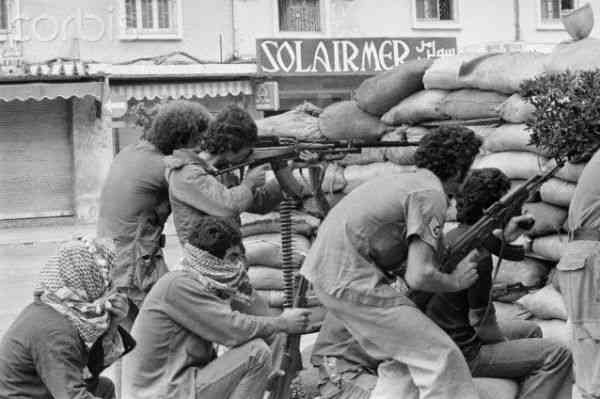
Some Arab leaders tried to intervene to save the PLO, such as Jaafar Nimeiri, the president of Sudan at the time, but his attempt was unsuccessful.
The Jordanian army took control of the situation and arrested most of the organization’s leaders. More than 7000 Palestinian militants surrendered and thousands of Palestinian militants were killed and thousands of Palestinians were thrown into detention camps.
Yasser Arafat, in disguise, fled Jordan, accompanied by Kuwaiti Defense Minister Saad Abdullah, but the Jordanian government did not try to catch him, as its goal was to restore control of the state and stop the riots by the organizations and open the door to reconciliation in the future.
The Cairo conference was held under the chairmanship of Gamal Abdel Nasser, according to which it was agreed to expel the Palestinian militants from the main Jordanian cities and leave them to live in the jungles of Jerash and Ajloun, which are cities in northern Jordan, and they agreed to hand over weapons and the leaders to leave Jordan.
Then Wasfi al-Tal was appointed Prime Minister, and it was only months before matters flared up again, as the Palestinian gunmen residing in the Debbine forests in Jerash killed many people from neighboring villages, so the Jordanian army raided them and eradicated them forever.
The Syrian position
Syria stood on the side of the Palestinian organizations, as we said earlier, and in the winter of 1971 it launched massive attacks that outperformed the Jordanian army. However, the Jordanian army fought fiercely and faced the Syrian attack, backed by the Jordanian air force.
However, due to the Jordanian and American military pressure, the Syrian planning to protect the organizations was weak and was more like theatricality, and the Jordanian forces were aware of the ground movements of the Syrian forces ...
The Syrian forces moved under the leadership of Major General Mahmoud Bagh, who was surprised by a violent response by the Jordanian forces, who deployed huge forces called the Hijab Forces. The Syrian Air Force did not intervene in the war due to the refusal of the Syrian Minister of Defense Hafez al-Assad to intervene in the war, which prompted the Syrian forces to withdraw their soldiers and return to collect their wreckage and their victims.
The Iraqi position
Although Iraqi President Ahmad Hassan Al-Bakr was critical of the Jordanian policy of dealing with Palestinian organizations, Iraqi forces never interfered in the armed conflict.
The dead and wounded
Ahmed Jibril (a Palestinian politician and military leader with Syrian nationality and founder of the Palestine Liberation Front) estimated in a press interview with Al-Jazeera the number of dead at 4000 on the Palestinian side.[3]
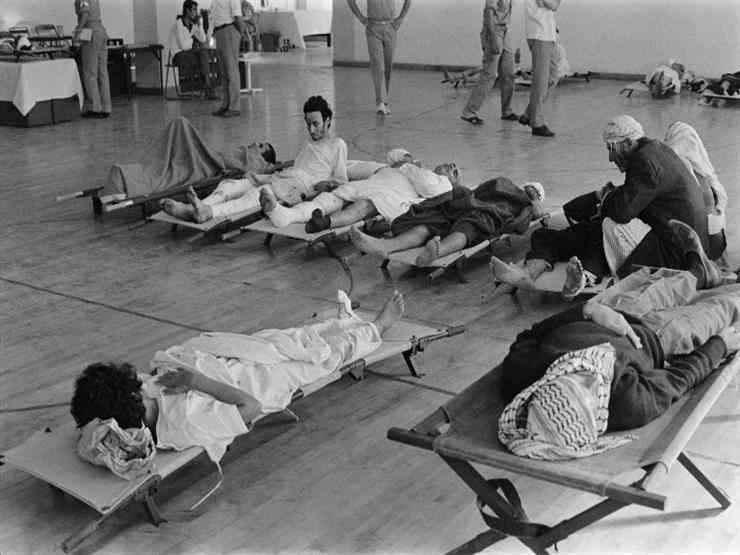
While the number of Jordanian military deaths, according to the records of the Jordanian army, has reached more than 110 Jordanian soldiers, while the number of Jordanian civilians killed may reach 1,300.
After Black September
The Palestinian factions were expelled from Jordan to Lebanon, and the Fatah movement established the Black September organization whose aim was to take revenge on the figures who thwarted their political presence in Jordan, so they carried out several operations in Jordan, the first of which was the attempt to assassinate Zaid Al-Rifai in London, and on November 28, 1971, it assassinated the Jordanian Prime Minister Wasfi. Al-Tal in Cairo as Wasfi al-Tal was responsible for the failure of Palestinian organizations to control the regime in Jordan. The organization also tried to detain members of the Jordanian government and try to break the families of the cell that wanted to overthrow the regime in Jordan.
Sources :
[1]The story of the attempted assassination of King Hussein.
http://www.ammanjo.net/article/116426
[2]Aljazeera
[3]Watch the era program on Al-Jazeera
Journalist Ahmed Mansour interviews Ahmed Jibril
https://www.youtube.com/watch?v=JRBL1aCvZms&list=PL-8F_zWD8KtrY5o2LGGy4u0ZO2HwnG-af

